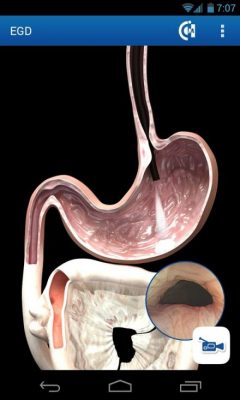
Endoscopy simply means to look inside. It is a general term that includes all the more descriptive terms such as arthroscopy (joints), colonoscopy (colon), gastroscopy (stomach), rhinoscopy (nasal cavity or nose), and so on.
Endoscopy has a distinct advantage over most other imaging tools in that we see the actual body part as opposed to an image created by radiology or ultrasonography. Our videoscope allows us to view, on a computer monitor, whatever is accessible by the flexible tube which houses the camera. We have endoscopes of different sizes and lengths the largest being three meters. We are able to capture digital photographs of what we see or video if the movement of the structure is in question.
In small animals, endoscopy is useful to visualize the colon, trachea, bronchi, esophagus, stomach, and duodenum. It often allows us to remove foreign objects from the trachea, esophagus and stomach without surgery. All of the minimally invasive (small incisions) human and veterinary surgeries are done with the aid of an endoscope.
Our veterinarians use the endoscope in the equine practice to diagnose gastric (stomach) ulcers, esophageal lesions, choke, swallowing problems, throat infections, pneumonia, breathing problems, airway obstructions and nasal cavity disease such as tumors. We can view structures with the endoscopes that, due to the size of the animal, are not visible with radiology or ultrasound.
